Tokyo is a megacity where traditions and innovations collide and intermingle – a city in constant motion, ever-evolving and reinventing itself as people across the world continue to become more interconnected. The city’s meticulously maintained streets and subways exudes an orderly society and respect for law that makes the widespread and growing presence of graffiti even more compelling in the ways it offers a subversive counterpoint to notions of Tokyo’s structured neatness and a compliant civil society.
Stylistically, rakugaki reflects a dynamic fusion of old and new. The tags and throw-ups I came across showcase the stylistic influences of calligraphy, kanji, ukiyo-e motifs, and the Japanese alphabet in bold colors and abstract shapes. The following photographs were taken in June 2024 in the Tokyo neighborhoods of Fuchu City, Kichijoji, Shibuya, Nippori, Kogenai, Shimokitizawa, and Shunjuku.
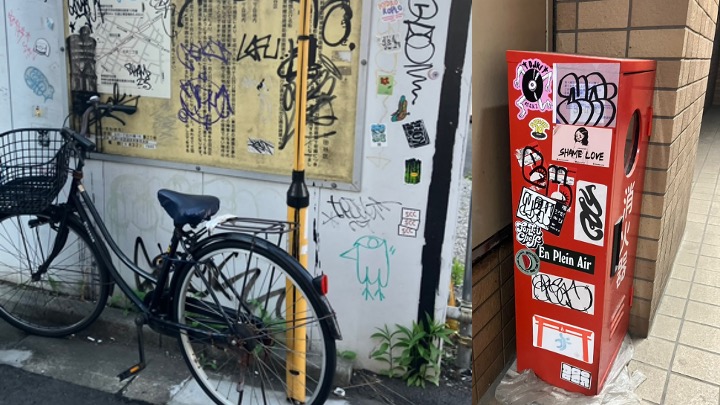
The art of graffiti writing was first introduced to Japan in the early 1980s through the Hip Hop themed film, Wild Style. A delegation of Hip Hop pioneers from the South Bronx, Hip Hop’s birthplace, traveled to Tokyo to screen the film and perform live to much fanfare. However, graffiti did not emerge as a cultural practice until the late 1990s, growing in lock and step with Hip Hop’s other three core artistic practices (i.e., Breakin’, Rap, and DJing). Referred to as ‘rakugaki’, graffiti – in the form of stickers, tags, throw-ups, and pieces – is now ubiquitous, a permanent feature of Tokyo’s urban landscape.
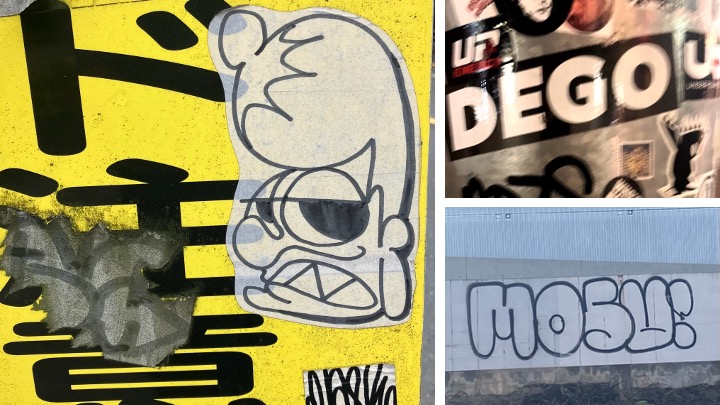
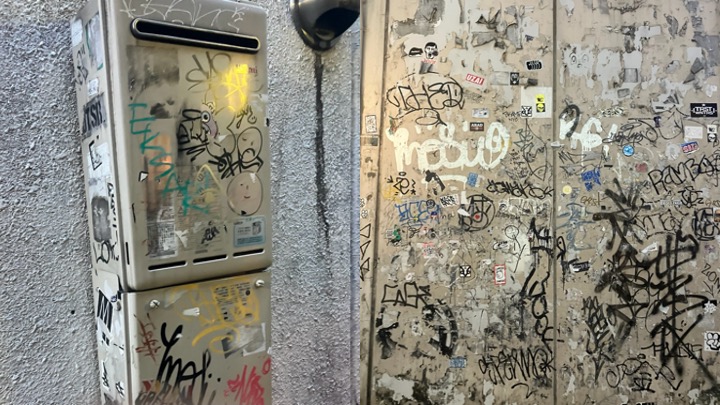
Unlike in graffiti hubs like New York City, Berlin, and Sao Paolo, where graffiti is overt, and hard to miss, graffiti in Tokyo is more discreet. While it is not present on subway trains or buses, it can be found on the back of street signs, electrical boxes, railings, foot bridges, walls of buildings, vending machines, and street poles.
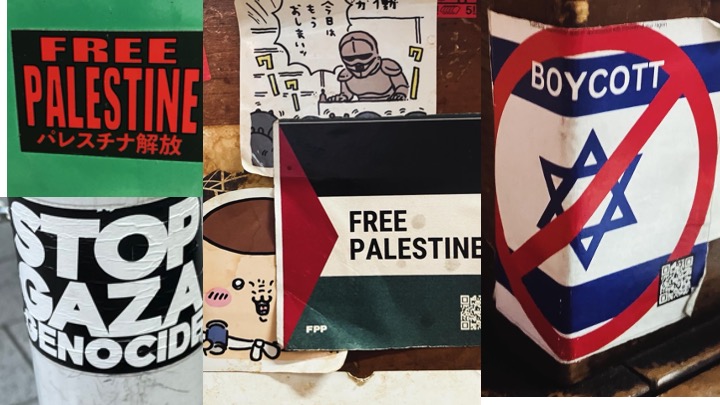
Coming across political stickers advocating for Palestinian independence, justice and self-determination served as potent reminders of the solidarity felt by people around the world.

In their desire to make a statement, to communicate, to be known, Japanese graffiti writers navigate a fine line between creativity and criminality. Because of the strict laws against vandalism, many tags, throw-ups and pieces vanish as quickly as they appear.
There is a rush that comes with not getting caught, in evading the police and the state’s high-tech surveillance apparatus, and avoiding expensive fines, even imprisonment.
Graffiti in Tokyo is not just an act of rebellion; it’s a dialogue between the writer and the city and its people. It’s just one component to the city’s visual identity – a space where old and new, order and chaos, coexist in a delicate, ever-shifting balancing act.
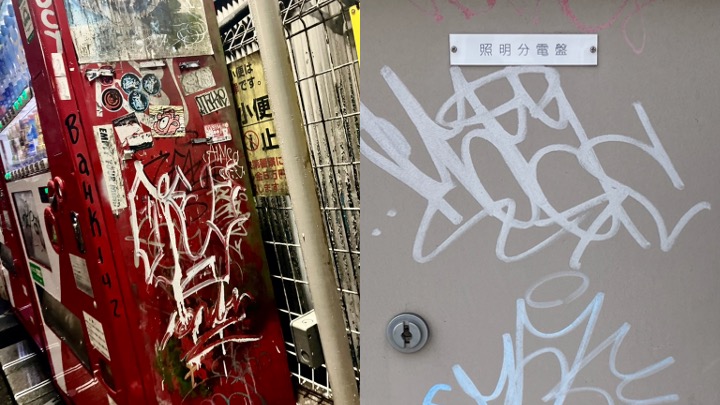
Text and Images by Prof. Seth Markle (Faculty Advisor, Trinity Chapter of Temple of Hip Hop)
